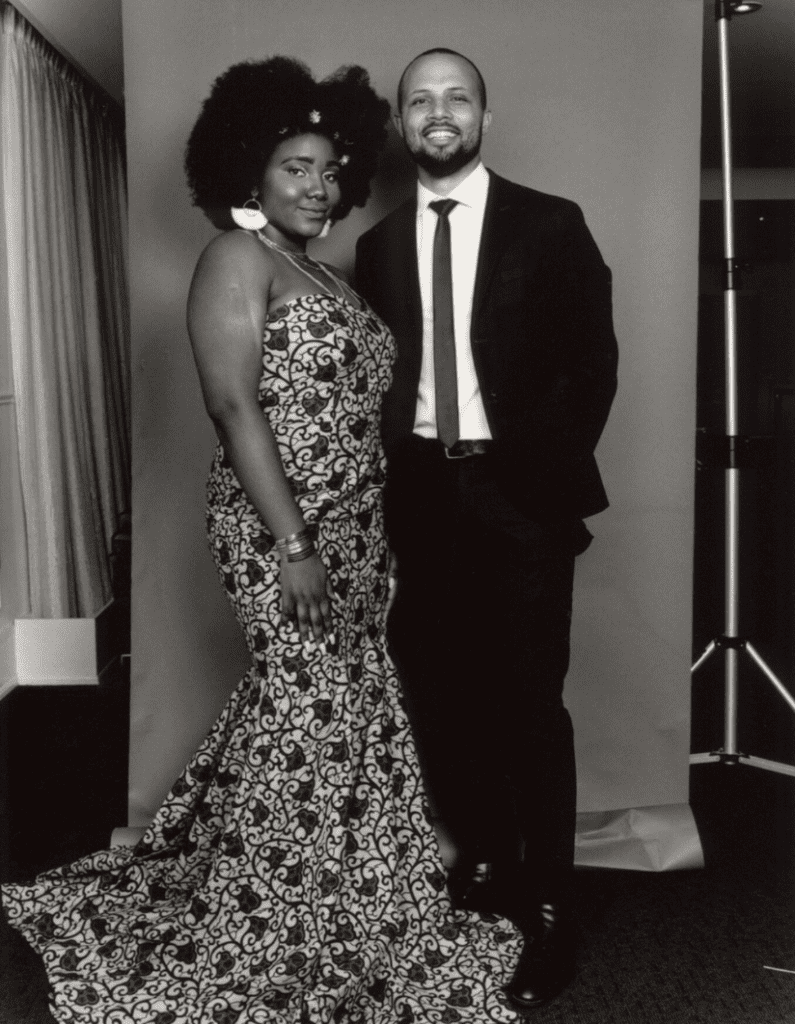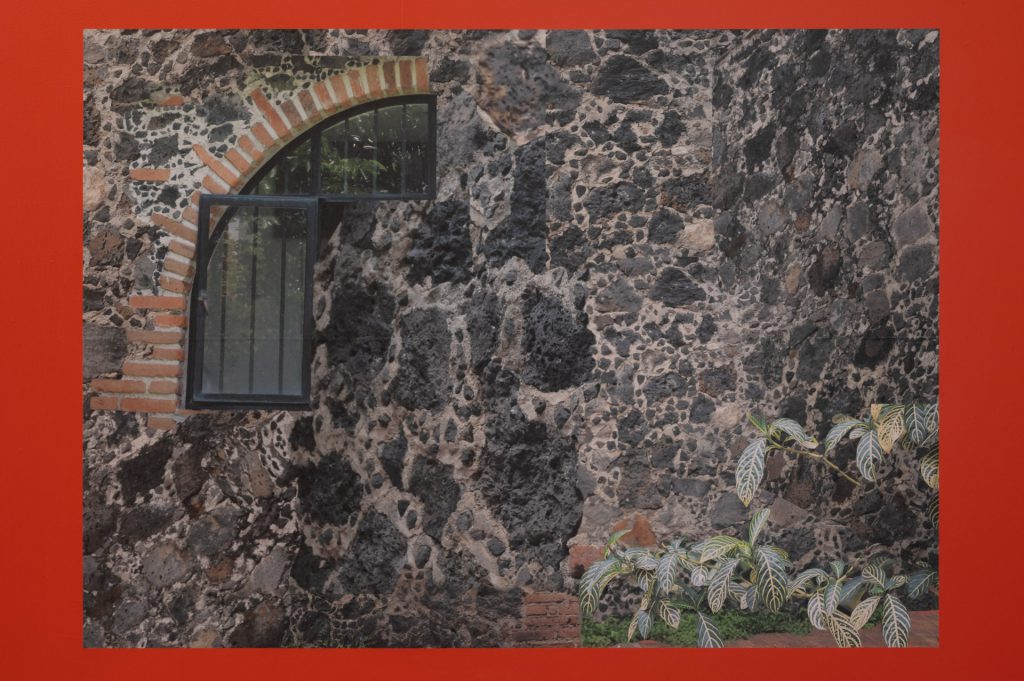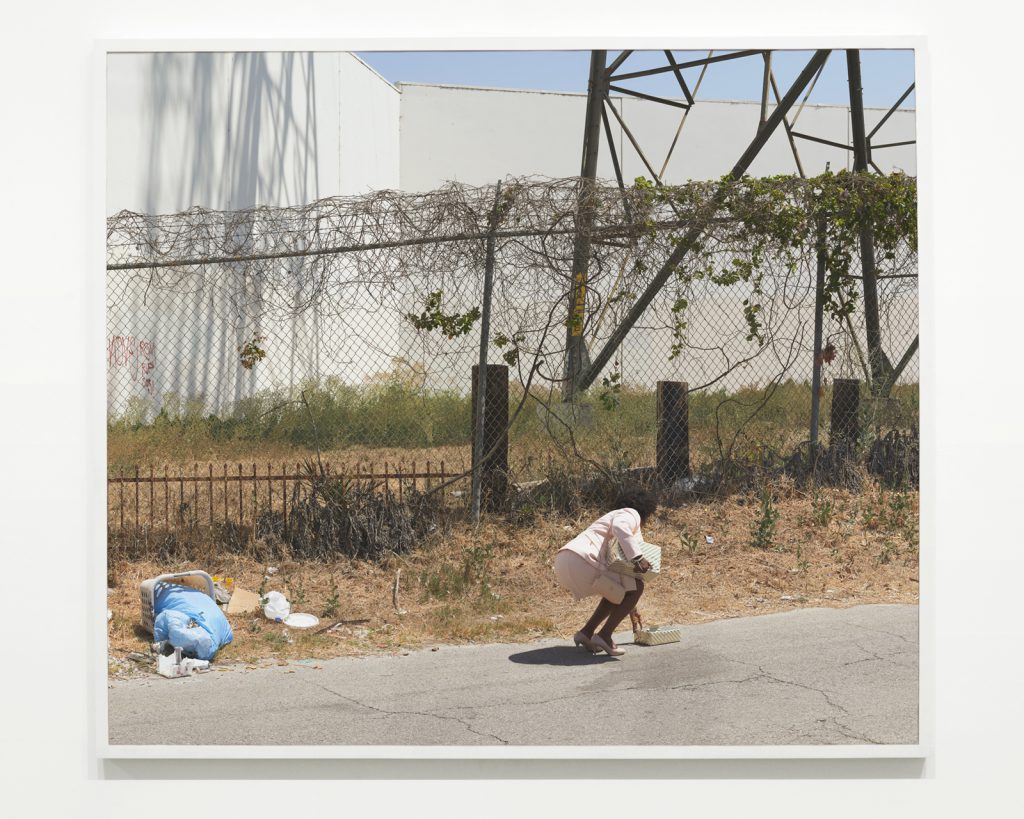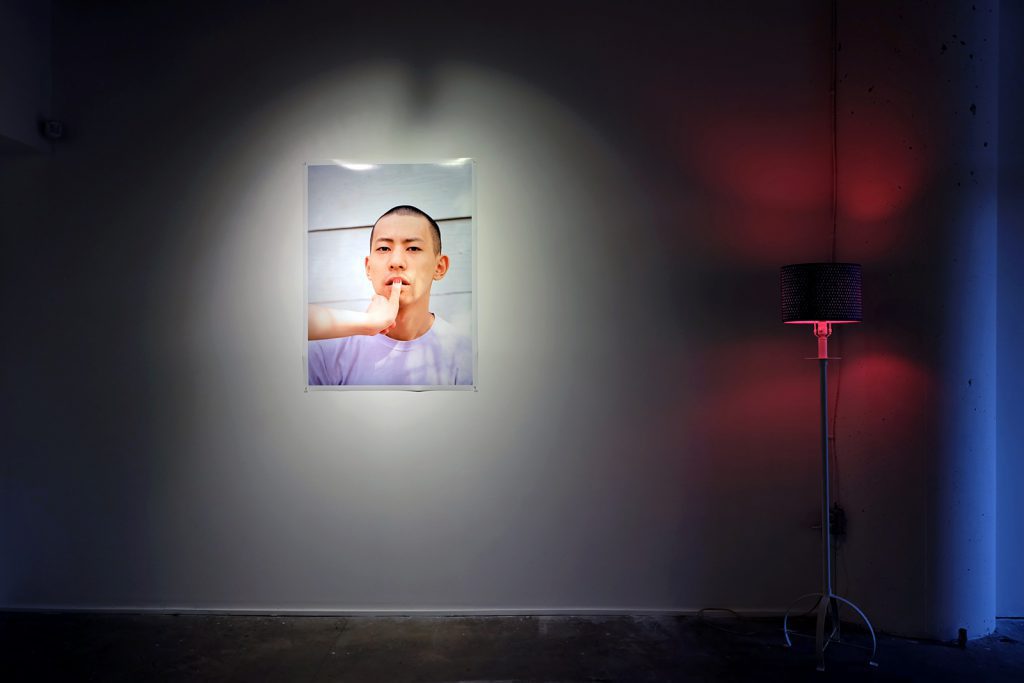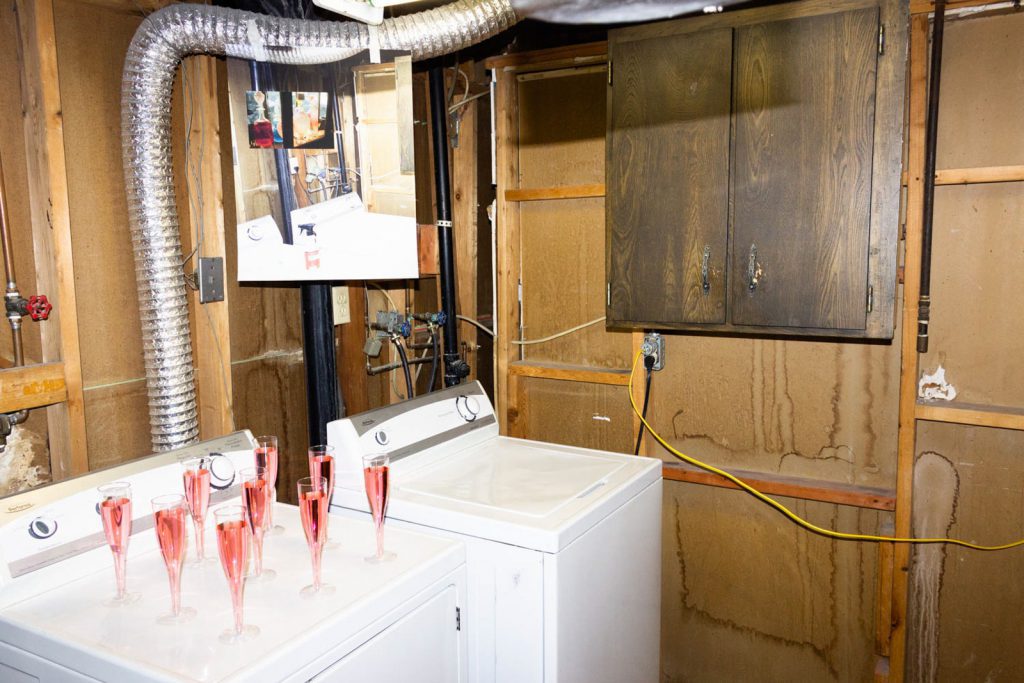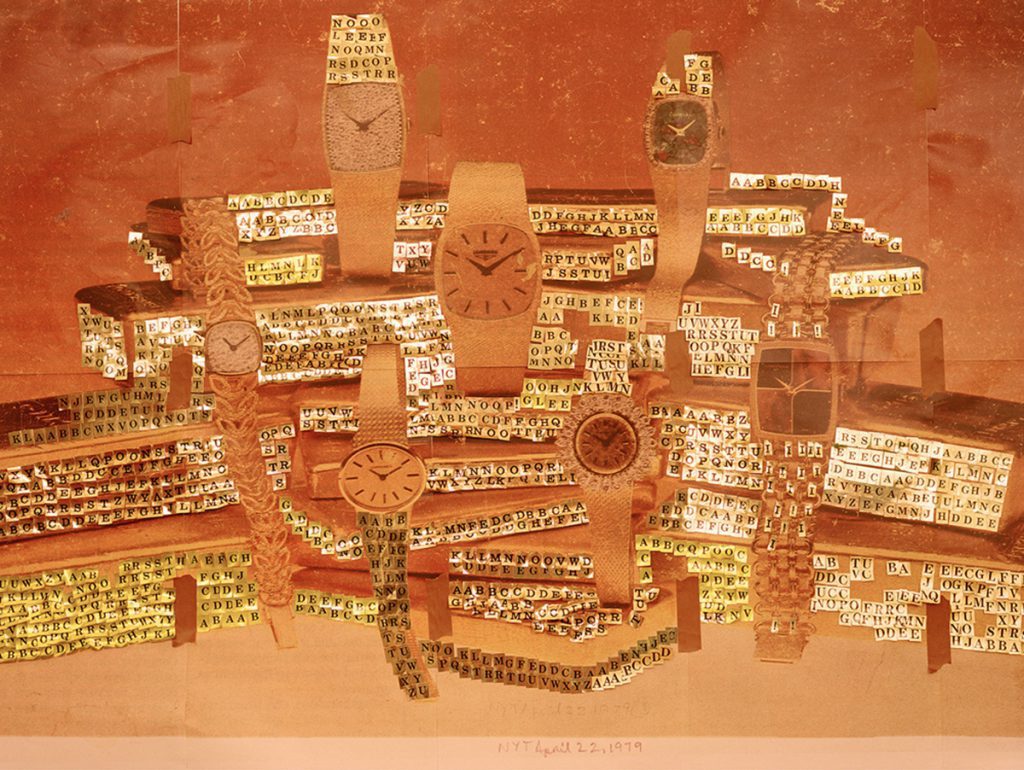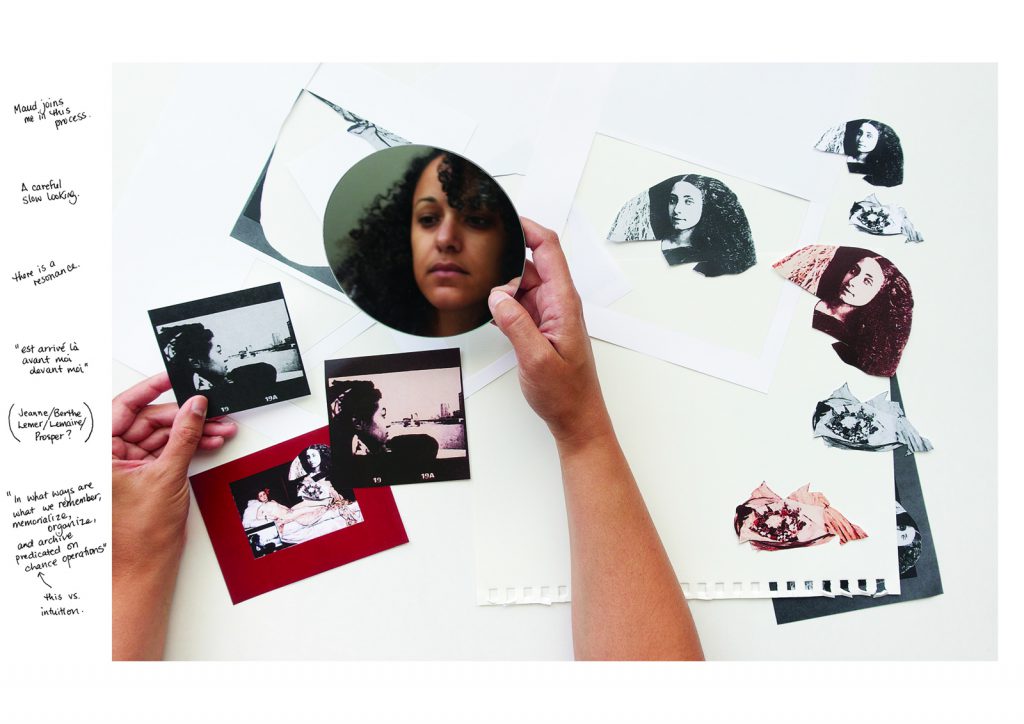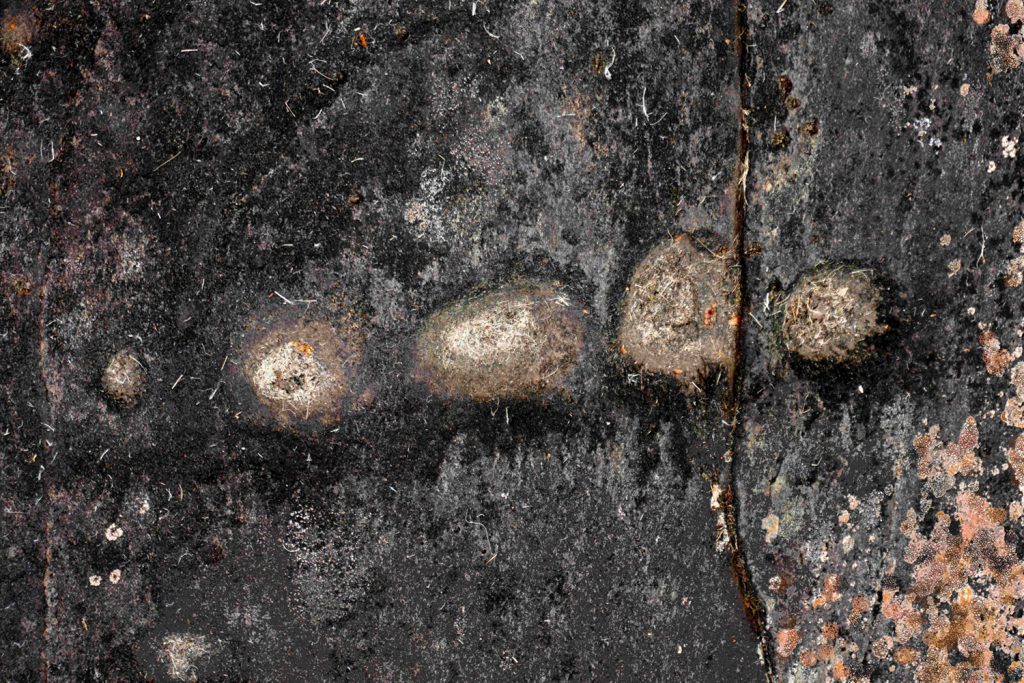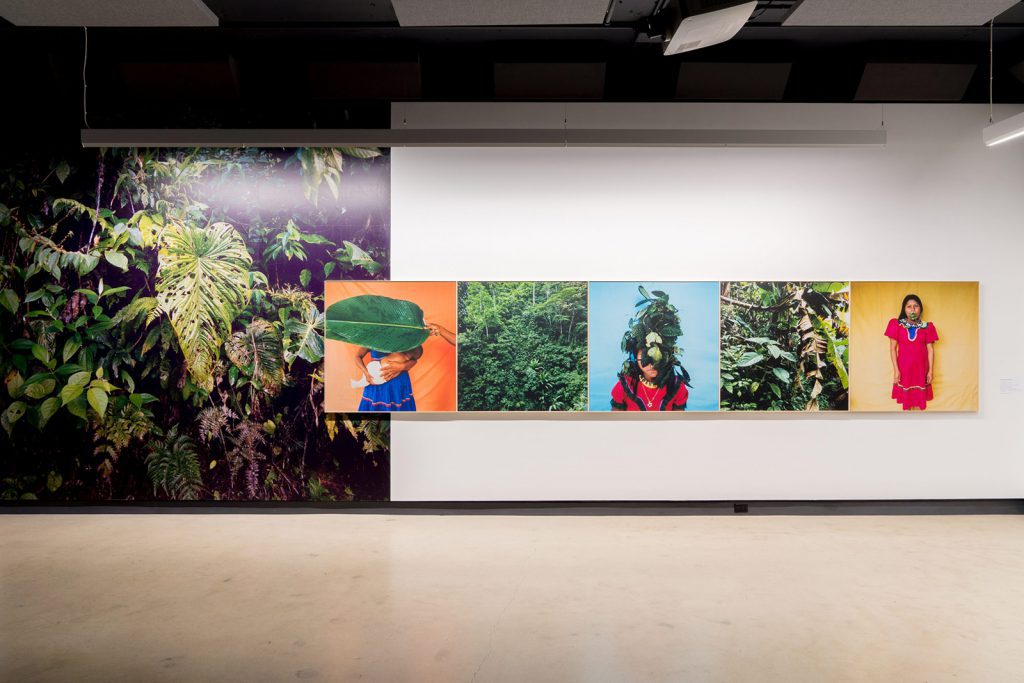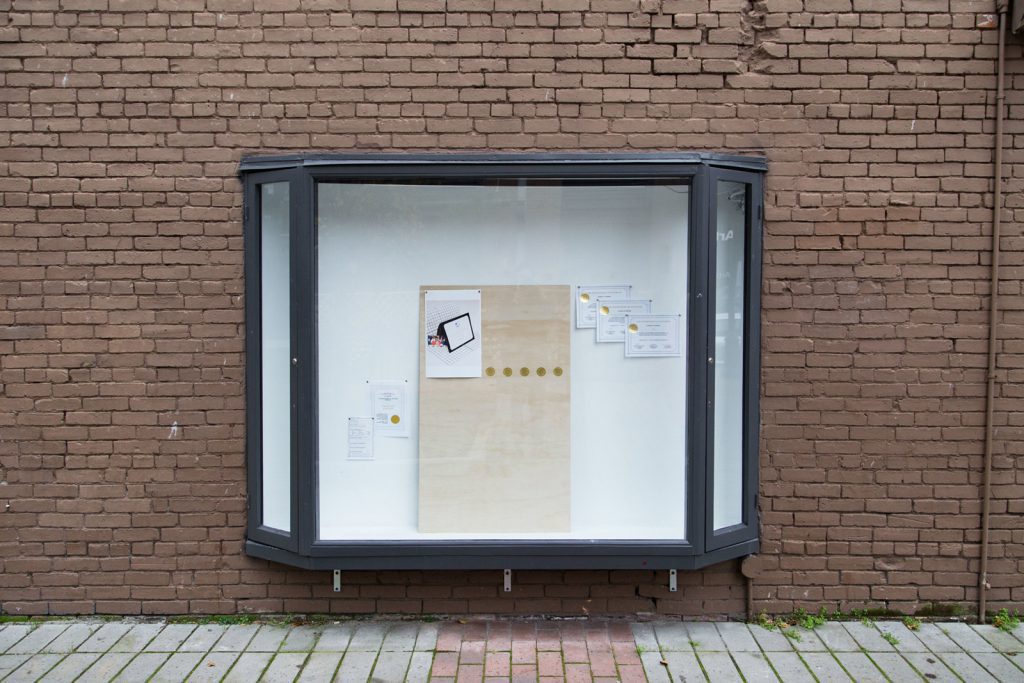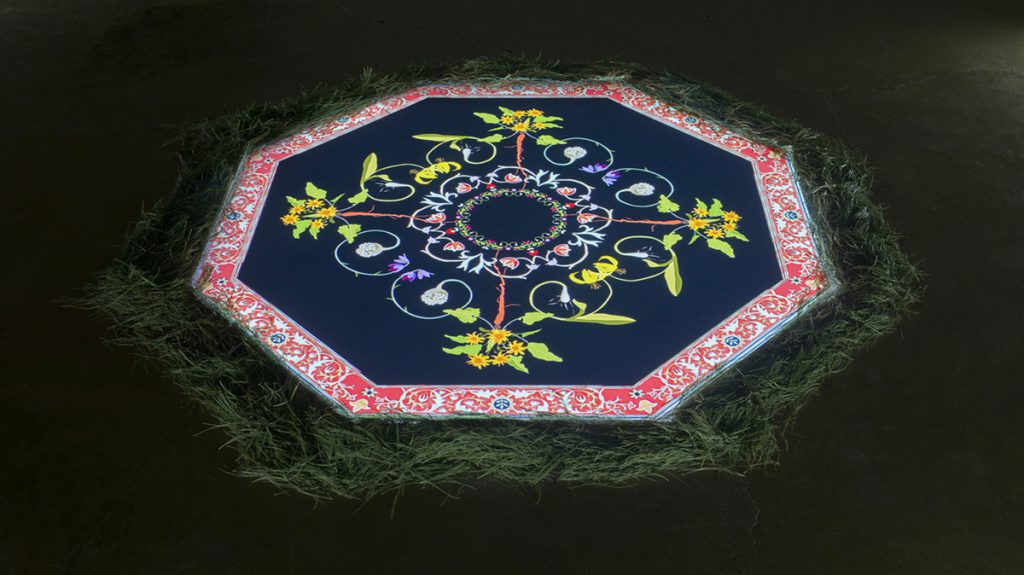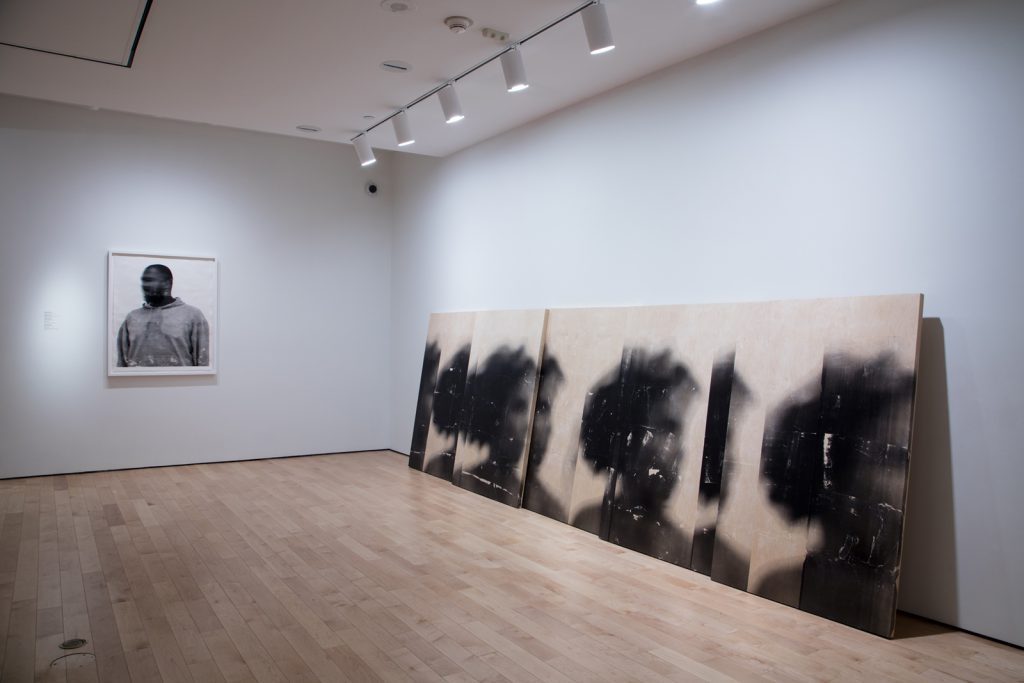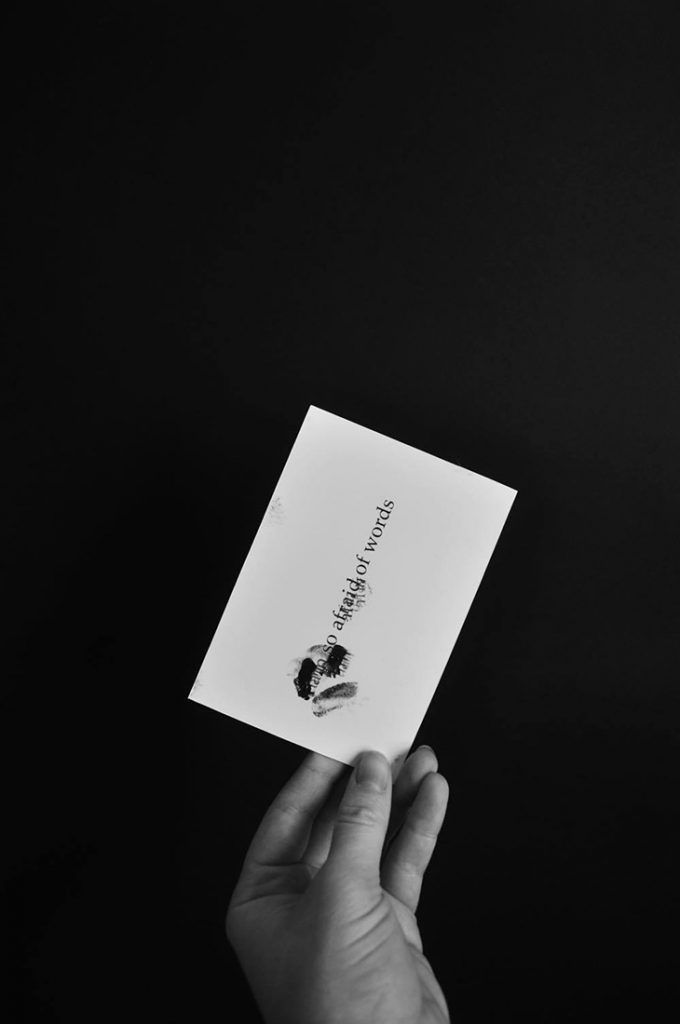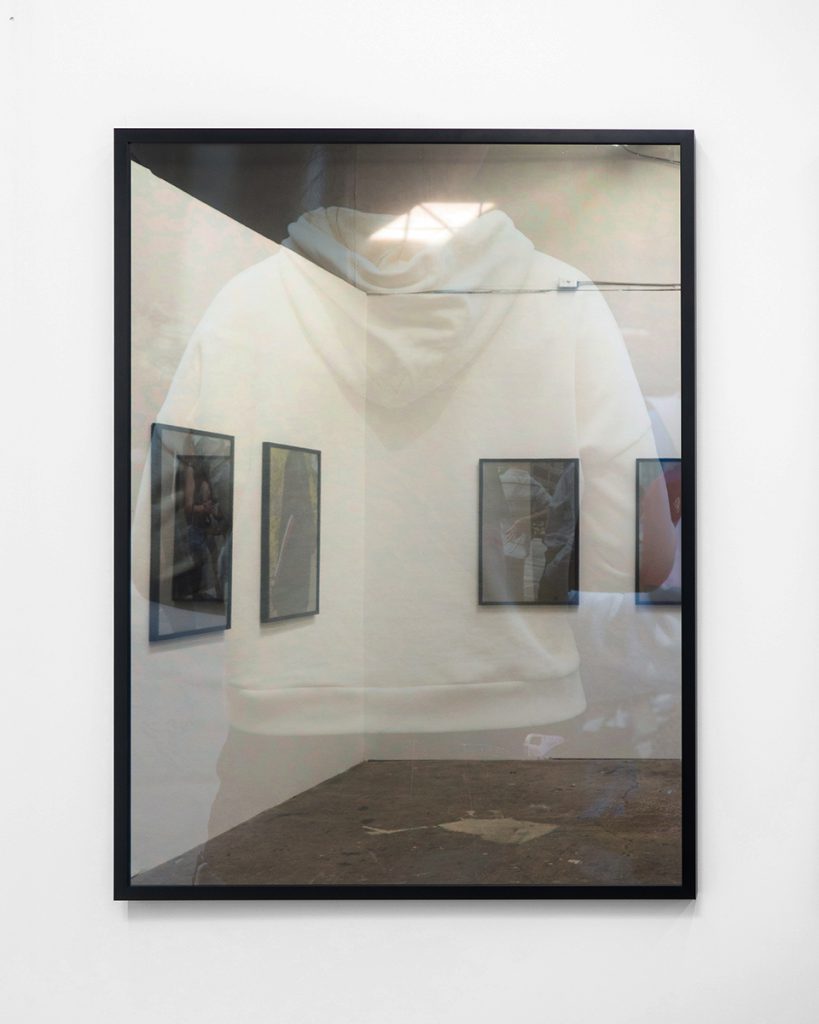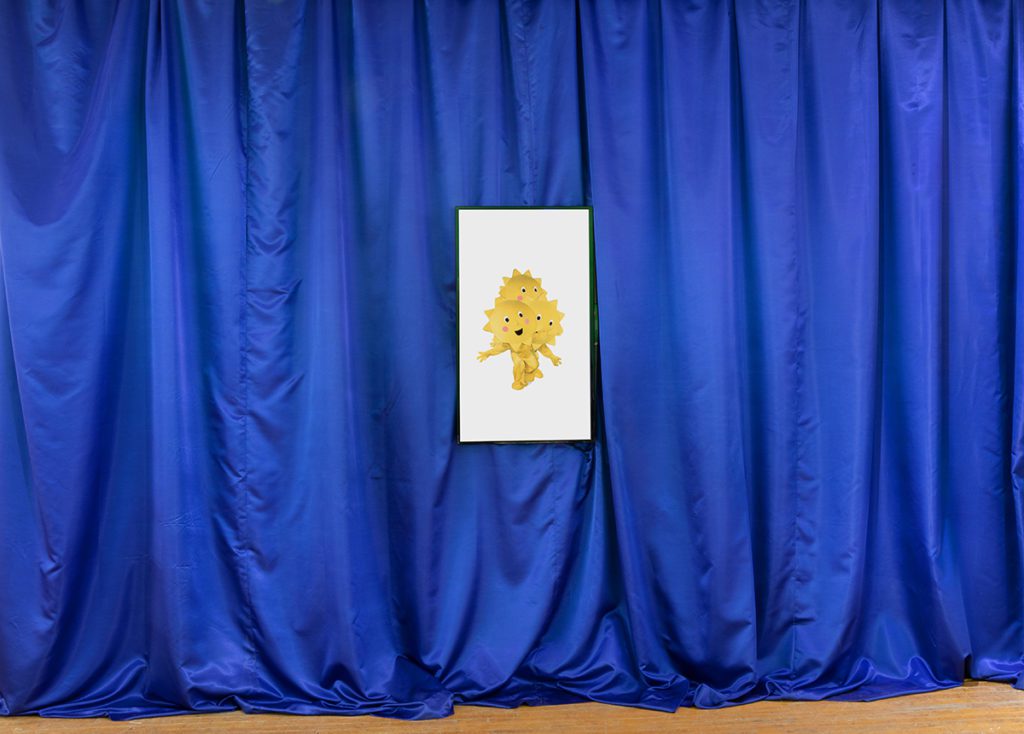
A Wish Stays With You: Hannah Doucet at PLATFORM Centre
12 December 2022By Sophia Larigakis
At the centre is a bright yellow fountain, its three brimming basins ascending like a tiered wedding cake. Perfect circular droplets, forming chains of liquid beads, cascade from the top. This sculpture, Hannah Doucet’s Wish Fountain (2022), installed at PLATFORM as part of her solo exhibition A Wish Stays With You, is doubly deceptive. To create the “water,” the artist printed a photograph of the liquid onto fabric, made folds in the textile, photographed that, and then made vinyl images out of its composite. The result is both painterly and deeply digital, evoking a Hockney pool by way of The Sims, with all the flattening of density that entails. Approaching Wish Fountain, it is clear that this is no ready-made; it is not a functioning, real-life fountain, nor does it pretend to be.1 As the viewer moves around the sculpture, however, even its slim claim to verisimilitude (in that it is a recognizable form) is called into question. What appears at first to be a three-dimensional sculpture is in fact images on vinyl on two separated pieces of wood, the space between them the space of fantasy itself—the fantasy of dimensionality, of immersion, of liveliness.
Continue Reading